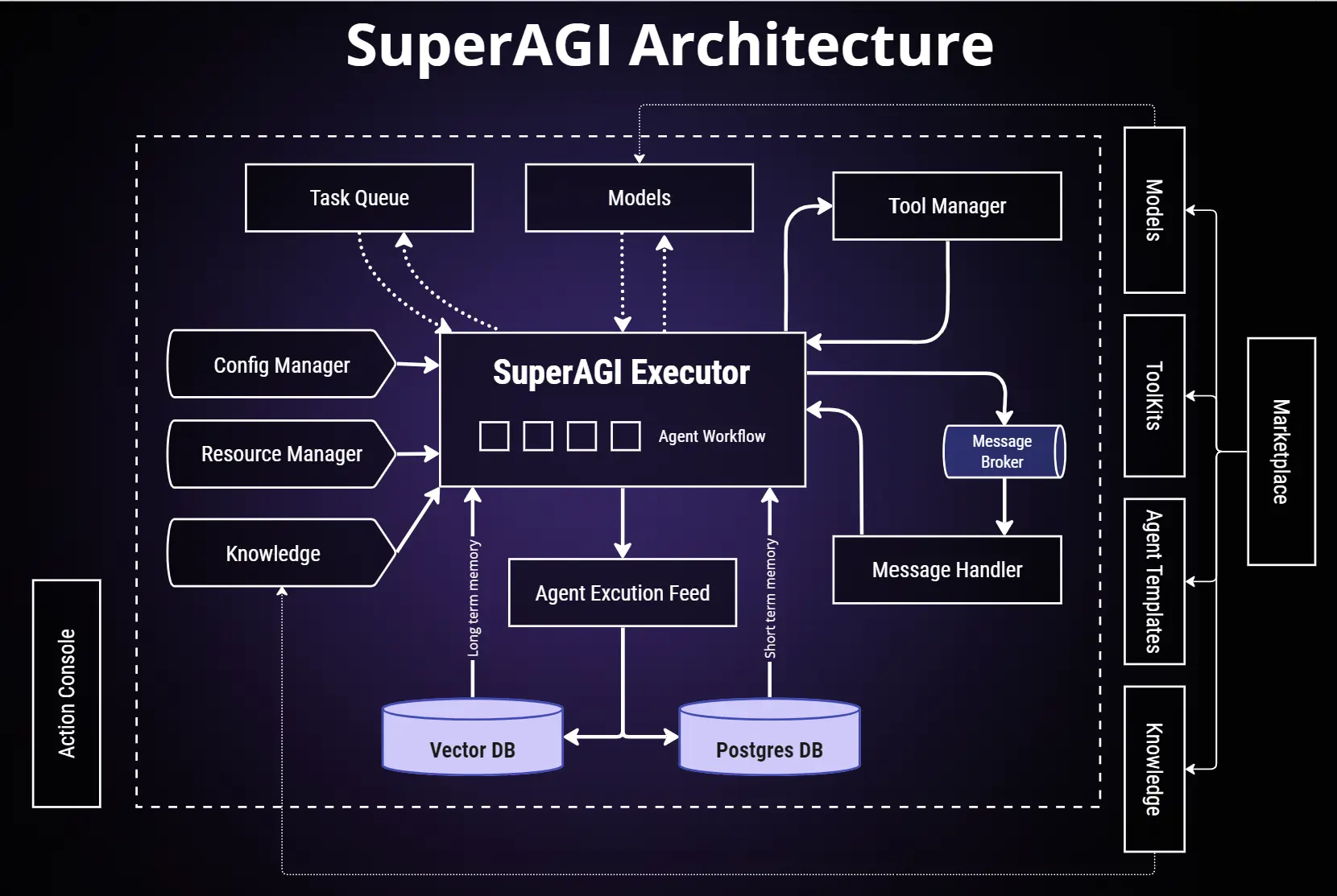https://github.com/TransformerOptimus/SuperAGI
Part3 - Agent Workflow Architecture

1. SuperAGI Executor:
Central to the architecture is the SuperAGI Executor. It serves as the heart of the operation, where most of the agent’s activities are coordinated.
-
Agent Workflow: Represents the sequence of steps or tasks that an AGI agent undergoes. This could be anything from processing an input to delivering an output.
-
Agent Execution Feed: This is likely where the agent retrieves tasks and executes them, acting as a continuous feed of operations.
2. Databases: Vector DB and Postgres DB
These are the two primary data storage systems:
-
Vector DB: Perhaps optimized for high-speed, large-scale data operations which may require vector processing, like neural network operations.
-
Postgres DB: A popular relational database system, probably used for structured data storage and retrieval.
3. Peripheral Components:
Several modules interact with the main Executor to maintain, manage, and ensure the smooth operation of the AGI system.
-
Task Queue: A waiting area for tasks that are pending execution. They’re picked up by the Executor as and when resources are available.
-
Config Manager: Manages the configuration settings of the AGI system, ensuring that parameters are set as per requirements.
-
Resource Manager: Allocates resources (like memory or compute power) to different tasks based on priority and availability.
-
Knowledge: Could be a knowledge base or repository that the AGI system taps into for information retrieval or decision-making.
4. Communication Channels:
-
Message Broker: This component likely handles the distribution of messages or tasks within the system, ensuring seamless communication between components.
-
Message Handler: Once messages are brokered, this module might be responsible for processing those messages and ensuring they reach the intended destination.
5. Tooling and Extensions:
-
Tool Manager: Oversees and manages various tools or plugins that can be integrated with the AGI system.
-
Models, Toolkits, and Agent Templates: Libraries or repositories containing pre-trained models, toolkits for specific functionalities, and templates to create new agents.
-
Marketplace: Potentially a platform where external developers can share or sell their AGI tools, models, or extensions.
6. Action Console:
A user interface or dashboard where operators can manually intervene, monitor, or execute specific commands in the AGI system.